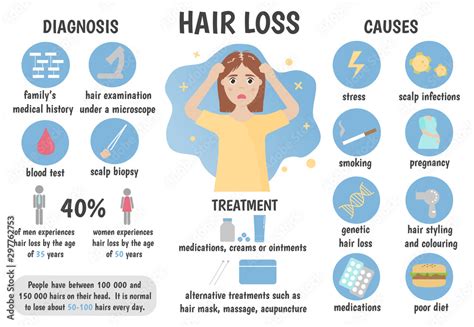Hair loss on top of head, also known as androgenetic alopecia or male-pattern baldness, is a common condition that affects both men and women. It is characterized by a gradual thinning of hair on the crown of the head, eventually leading to complete baldness in some cases.

Causes of Hair Loss on Top of Head
- Genetics: Androgenetic alopecia is primarily caused by heredity, with certain genes making individuals more susceptible to hair loss.
- Age: Hair loss on top of head is more common with age, as hair follicles become less active and produce thinner, weaker hair.
- Hormonal Changes: Androgens, hormones produced by both men and women, can contribute to hair loss. In men, testosterone converts to dihydrotestosterone (DHT), which binds to hair follicles and causes them to shrink. In women, hormonal imbalances during menopause or other life events can also lead to hair loss.
- Medical Conditions: Certain medical conditions, such as thyroid disorders, autoimmune diseases, and infections, can cause hair loss.
- Medications: Some medications, including chemotherapy drugs, anticoagulants, and antidepressants, can have hair loss as a side effect.
Types of Hair Loss on Top of Head
1. Diffuse Thinning: This is the most common type of hair loss on top of head. It involves a gradual thinning of hair over the entire scalp, often starting at the crown.
2. Patchy Hair Loss: This type of hair loss is characterized by the appearance of round or oval patches of bald skin on the scalp. It can be caused by alopecia areata, an autoimmune condition that attacks hair follicles.
3. Complete Baldness: In severe cases, hair loss on top of head can progress to complete baldness, leaving only a few hairs or no hair at all on the scalp.
Treatments for Hair Loss on Top of Head
1. Minoxidil: This over-the-counter medication is applied to the scalp and helps slow hair loss and promote hair growth in some cases.
2. Finasteride: This prescription medication is used to treat androgenetic alopecia in men. It blocks the conversion of testosterone to DHT, thereby reducing the effects of androgens on hair follicles.
3. Dutasteride: This prescription medication is similar to finasteride but is more effective in preventing hair loss in men.
4. Spironolactone: This prescription medication is used to treat hormonal imbalances in women and can help slow hair loss in some cases.
5. Hair Transplantation: This surgical procedure involves removing hair follicles from a donor site (typically the back or sides of the head) and implanting them into the areas of hair loss.
Prevention of Hair Loss on Top of Head
While not all types of hair loss on top of head are preventable, there are some steps you can take to reduce your risk:
1. Manage Stress: Chronic stress can trigger hair loss. Finding healthy ways to manage stress, such as exercise, meditation, or yoga, can help prevent hair loss.
2. Avoid Damaging Hair: Using harsh hair care products, heat styling tools, and chemical treatments can damage hair and contribute to hair loss. Be gentle with your hair and use products that are designed for your hair type.
3. Maintain a Healthy Diet: A diet rich in essential nutrients, including vitamins, minerals, and protein, is important for healthy hair growth.
Common Mistakes to Avoid
1. Delaying Treatment: Seeking treatment for hair loss on top of head as soon as possible is important. The longer you wait, the more difficult it will be to reverse the effects of hair loss.
2. Using Unproven Remedies: There are many unproven remedies for hair loss on the market. It is important to stick to treatments that are supported by scientific evidence.
3. Overusing Medications: Overusing over-the-counter or prescription medications for hair loss can have side effects. Always follow the instructions provided by your healthcare provider.
Conclusion
Hair loss on top of head is a common condition that can affect both men and women. While there is no cure for all types of hair loss, there are treatments available to slow down the process and promote hair growth. By understanding the causes, treatments, and prevention methods for hair loss on top of head, you can take steps to protect your hair and maintain a healthy scalp.
- According to the American Hair Loss Association, over 50% of men and 25% of women experience hair loss by the age of 50.
- Androgenetic alopecia affects approximately 80% of men and 50% of women.
- Minoxidil is effective in slowing hair loss in approximately 60% of men and 40% of women.
- Finasteride can prevent hair loss in approximately 80% of men.
- Hair transplantation has a success rate of approximately 90%.
